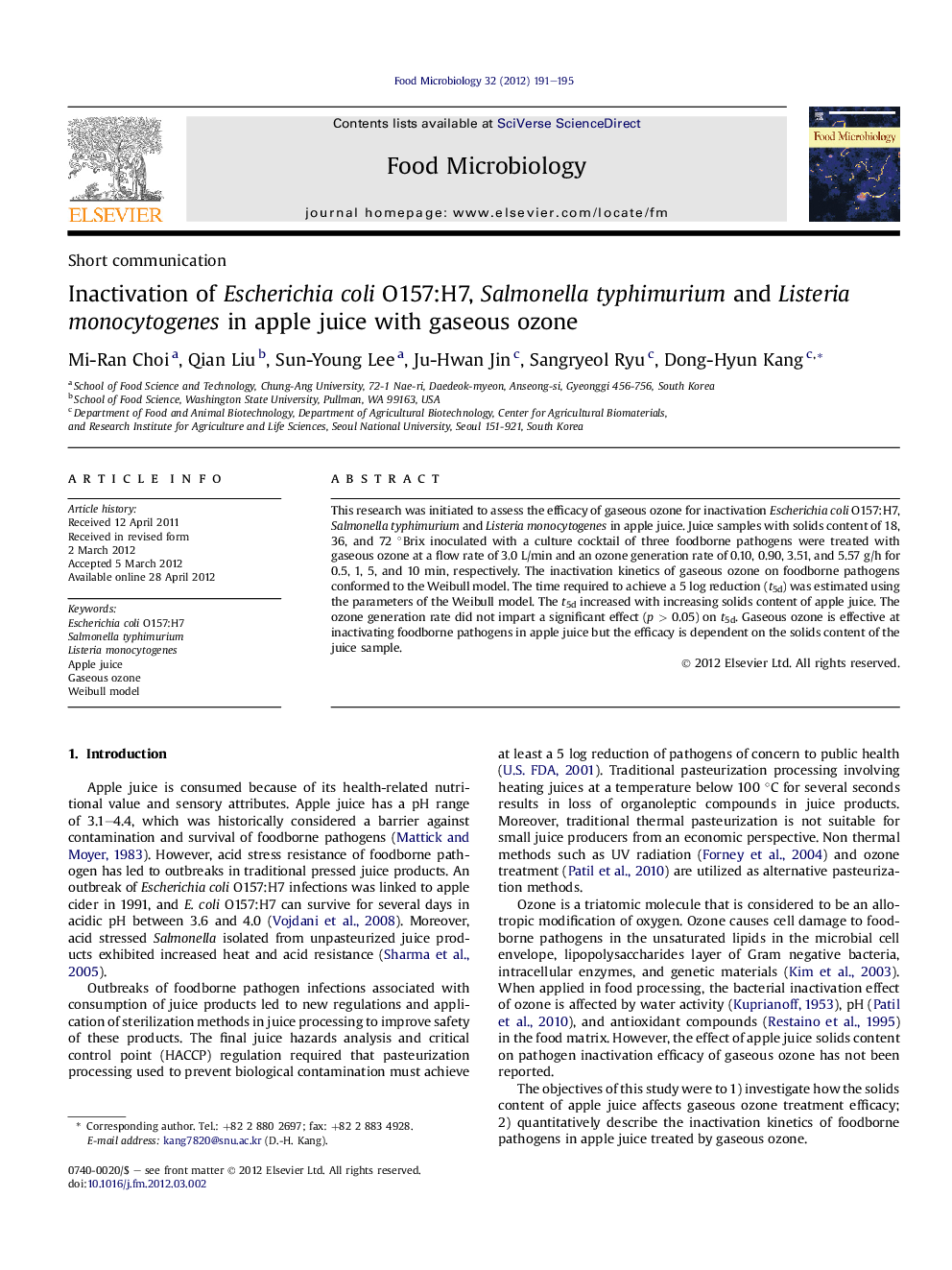| کد مقاله | کد نشریه | سال انتشار | مقاله انگلیسی | نسخه تمام متن |
|---|---|---|---|---|
| 4363064 | 1301536 | 2012 | 5 صفحه PDF | دانلود رایگان |

This research was initiated to assess the efficacy of gaseous ozone for inactivation Escherichia coli O157:H7, Salmonella typhimurium and Listeria monocytogenes in apple juice. Juice samples with solids content of 18, 36, and 72 °Brix inoculated with a culture cocktail of three foodborne pathogens were treated with gaseous ozone at a flow rate of 3.0 L/min and an ozone generation rate of 0.10, 0.90, 3.51, and 5.57 g/h for 0.5, 1, 5, and 10 min, respectively. The inactivation kinetics of gaseous ozone on foodborne pathogens conformed to the Weibull model. The time required to achieve a 5 log reduction (t5d) was estimated using the parameters of the Weibull model. The t5d increased with increasing solids content of apple juice. The ozone generation rate did not impart a significant effect (p > 0.05) on t5d. Gaseous ozone is effective at inactivating foodborne pathogens in apple juice but the efficacy is dependent on the solids content of the juice sample.
► Gaseous ozone can inactivate E. coli O157:H7, Salmonella typhimurium and Listeria monocytogenes in apple juice.
► The solid content of apple juice, gaseous ozone generation rate and treatment time can affect the inactivation efficacy.
► The inactivation effect was described with Weibull model and the t5d was calculated.
Journal: Food Microbiology - Volume 32, Issue 1, October 2012, Pages 191–195